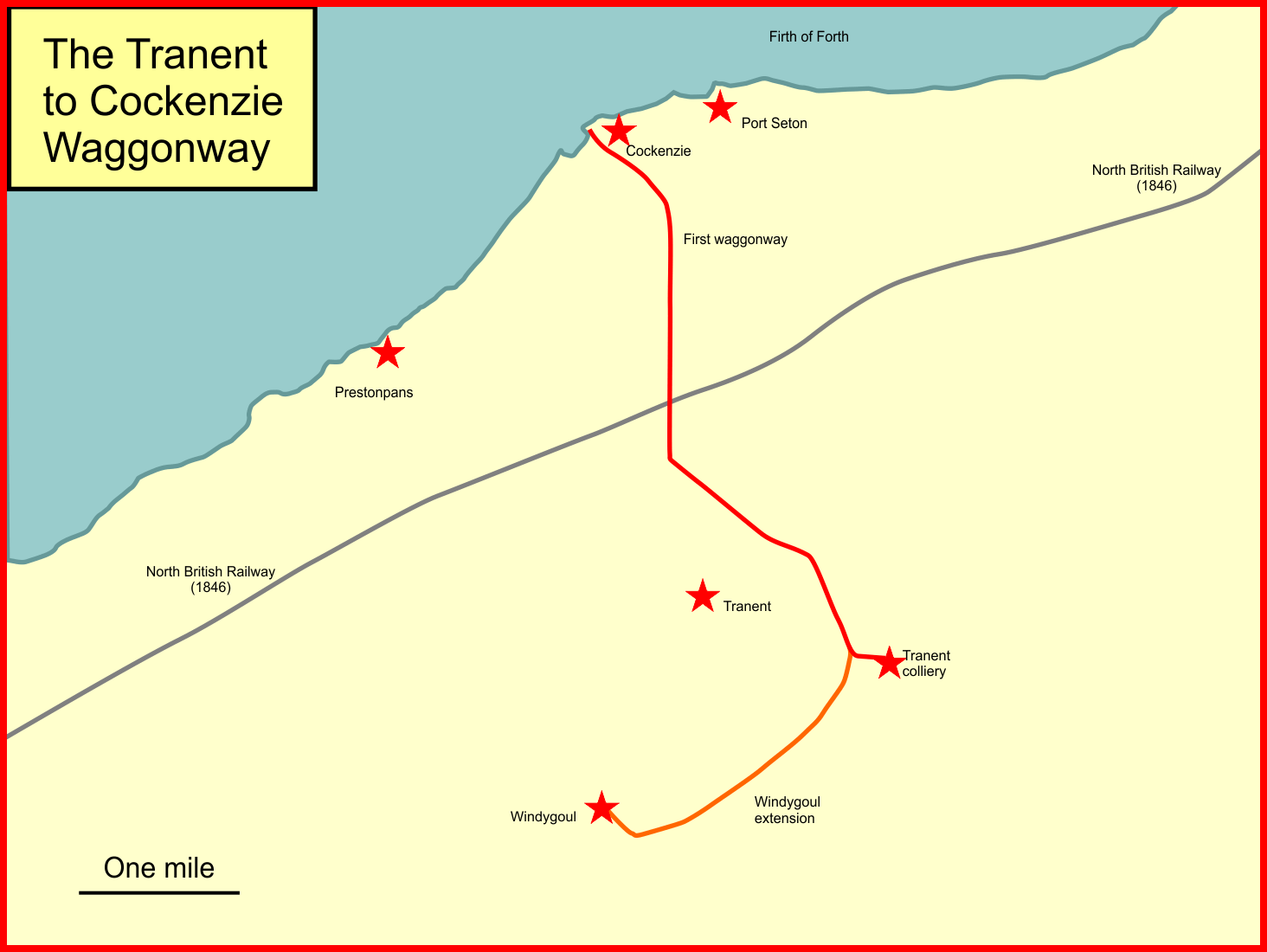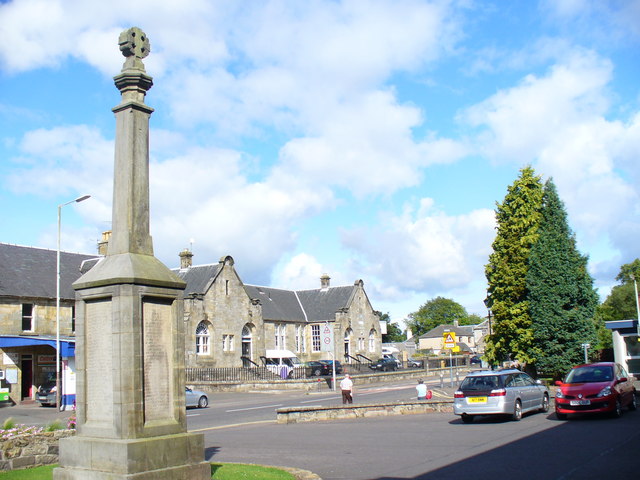|
Tranent
Tranent is a town in East Lothian (formerly Haddingtonshire), in the south-east of Scotland. Tranent lies 6 miles from the boundary of Edinburgh, and 9.1 miles from the city centre. It lies south of the A1 road (Great Britain), A1 road that runs through the parish splitting it from its associated villages and hamlets Meadowmill and the ports of Cockenzie and Port Seton. The original main post road ran straight through the town until the new A1 was built. Built on a gentle slope, about above sea level it is one of the oldest towns in East Lothian. The population of the town is approximately 12,140, an increase of over 4,000 since 2001. Tranent was formerly a major mining town, but now serves as a commuter town for Edinburgh. History The name is thought to be of British language (Celtic), Brythonic origin, possibly containing the elements ''Tre'' and ''Nant'', meaning town over the stream Travernant. Tranent was once an important mining town, and coal was first worked there ... [...More Info...] [...Related Items...] OR: [Wikipedia] [Google] [Baidu] |
Tranent To Cockenzie Waggonway
The Tranent to Cockenzie Waggonway was an early waggonway, possibly the first in Scotland, opened in 1722. It was long and connected coal pits at Tranent with the salt pans at Cockenzie and harbour at Port Seton in East Lothian. The track was wooden, and wagons were drawn by horses. The Battle of Prestonpans in 1745 was fought across the line. It was converted to use iron rails in 1815, and was connected to the new main line North British Railway from 1846, later becoming superseded by a branch line of that railway. A section of the original line of route was still in railway use until 1968. Some of the route can be traced at the present day. History Before the 18th century, salt production on the shore of the Firth of Forth was a considerable activity; salt water was evaporated in salt pans. This required considerable quantities of coal, and this formed the largest demand for coal in this period. It was initially possible to extract coal close to the salt pans, but these depo ... [...More Info...] [...Related Items...] OR: [Wikipedia] [Google] [Baidu] |
East Lothian
East Lothian (; ; ) is one of the 32 council areas of Scotland, as well as a Counties of Scotland, historic county, registration county and Lieutenancy areas of Scotland, lieutenancy area. The county was called Haddingtonshire until 1921. In 1975, the historic county was incorporated for local government in Scotland, local government purposes into Lothian Regional Council, Lothian Region as East Lothian District, with some slight alterations of its boundaries. The Local Government etc. (Scotland) Act 1994 later created East Lothian as one of 32 modern council areas. East Lothian lies south of the Firth of Forth in the eastern central Lowlands of Scotland. It borders Edinburgh to the west, Midlothian to the south-west and the Scottish Borders to the south. Its administrative centre and former county town is Haddington, East Lothian, Haddington while the largest town is Musselburgh. Haddingtonshire has ancient origins and is named in a charter of 1139 as ''Hadintunschira'' and ... [...More Info...] [...Related Items...] OR: [Wikipedia] [Google] [Baidu] |
Massacre Of Tranent
The Massacre of Tranent was an event which took place on 29 August 1797 in the town of Tranent, Scotland. Proclamation On 28 August 1797, a proclamation was drawn up by local residents in Tranent to object to the Scottish Militia Act 1797, which introduced conscription in Scotland to bolster the ranks of the militia by 6,000 men. The proclamation comprised four clauses: # ''We declare that we unanimously disapprove of the late Act of Parliament for raising 6000 militiamen in Scotland.'' # ''We declare that we will assist each other in endeavouring to repeal the said Act.'' # ''We declare that we are peaceably disposed; and should you, in endeavouring to execute the said Act, urge us to adopt coercive measures, we must look upon you to be the aggressors, and as responsible to the nation for all the consequences that may follow.'' # ''Although we may be overpowered in effecting the said resolution, and dragged from our parents, friends, and employment, to be made soldiers of, ... [...More Info...] [...Related Items...] OR: [Wikipedia] [Google] [Baidu] |
Battle Of Prestonpans
The Battle of Prestonpans, also known as the Battle of Gladsmuir, was fought on 21 September 1745, near Prestonpans, in East Lothian, the first significant engagement of the Jacobite rising of 1745. Jacobitism, Jacobite forces, led by the Stuart exile Charles Edward Stuart and Lord George Murray (general), George Murray, defeated a government army under Sir John Cope (British Army officer), John Cope, whose inexperienced troops broke in the face of a Highland charge. The battle lasted less than thirty minutes, was a huge boost to Jacobite morale, and established the revolt as a serious threat to the British government. Background The War of the Austrian Succession meant that by early 1745, the bulk of British forces were committed in Flanders. Encouraged by French victory at Battle of Fontenoy, Fontenoy in April 1745, Charles Edward Stuart sailed for Scotland in July, hoping to take advantage of the situation. When he landed at Eriskay in the Outer Hebrides on 23 July, most of ... [...More Info...] [...Related Items...] OR: [Wikipedia] [Google] [Baidu] |
Ross High School, Tranent
Ross High School is a large secondary school in Tranent, East Lothian. As of April 2021, the school roll was 1,259 (2021) making it the largest secondary school in East Lothian by pupil roll. The school was founded in 1954 and named after George Ross, who was convener of the local council at the time. The current head teacher is Paul Reynolds. In 2022 construction of an exstension was completed allowing for new ICT, modern languages and art classrooms. History Before Ross High School was established, students from Tranent and surrounding areas attended Preston Lodge High School in Prestonpans. Until 1954 when a major effort to provide a 6-year school for Tranent and surrounding villages. The name Ross High recognises the support of the convenor of East Lothian Council at the time George Ross. The original building was built in 1954 and partially still stands. A Public Private Partnership (PPP) refurbishment began in January 2003 and after various delays, was finished in 2005. An ... [...More Info...] [...Related Items...] OR: [Wikipedia] [Google] [Baidu] |
Ormiston
Ormiston is a village in East Lothian, Scotland, near Tranent, Humbie, Pencaitland and Cranston, located on the north bank of the River Tyne at an elevation of about . The village was the first planned village in Scotland, founded in 1735 by John Cockburn (1685–1758), one of the initiators of the Agricultural Revolution. Name The word Ormiston is derived from a half mythical Norwegian Viking settler called ''Ormr'', meaning 'serpent' or 'snake'. 'Ormres' family had possession of the land during the 12th and 13th centuries. Ormiston or 'Ormistoun' is not an uncommon surname, and ''Ormr'' also survives in some English placenames such as Ormskirk and Ormesby. The latter part of the name, formerly spelt 'toun', is likely to descend from its Northumbrian Old English and later Scots meaning as 'farmstead' or 'farm and outbuildings' rather than the meaning 'town'. There was an "Ormiston" in Berwickshire, near Linton, where the legend of the Worm of Linton was related t ... [...More Info...] [...Related Items...] OR: [Wikipedia] [Google] [Baidu] |
East Lothian (Scottish Parliament Constituency)
East Lothian (; ; ) is a Scottish Parliament constituencies and regions, constituency of the Scottish Parliament (Scottish Parliament Building, Holyrood) covering most of the Council areas of Scotland, council area of East Lothian. It elects one Member of the Scottish Parliament, Member of the Scottish Parliament (MSP) by the First past the post, plurality (first past the post) method of election. It is also one of nine constituencies in the South Scotland (Scottish Parliament electoral region), South Scotland Scottish Parliament constituencies and regions, electoral region, which elects seven additional member system (Scottish Parliament), additional members, in addition to the nine constituency MSPs, to produce a form of proportional representation for the region as a whole. The seat has been held by Paul McLennan from the Scottish National Party since the 2021 Scottish Parliament election. Electoral region The other eight constituencies of the South Scotland region are: ... [...More Info...] [...Related Items...] OR: [Wikipedia] [Google] [Baidu] |
Lament For The Makaris
"I that in Heill wes and Gladnes", also known as "The Lament for the Makaris", is a poem in the form of a danse macabre by the Scottish poet William Dunbar. Every fourth line repeats the Latin refrain '' timor mortis conturbat me'' (fear of death troubles me), a litanic phrase from the Office of the Dead. Apart from its literary quality, the poem is notable for the list of makars it contains, some of whom are historically attestable as poets only from Dunbar's testimony in this work. After listing Lydgate, Gower and Chaucer, the makars invoked are Scottish. All but two are cited as having died by the time of the composition. The two exceptions are the courtier Patrick Johnston and known poet Walter Kennedy, the latter of whom died . From internal evidence, the lament is generally thought to have been composed c. 1505. Most of the names can be traced to either the fourteenth or fifteenth centuries. List of names in the Lament The list of names in the Lament for the Makar ... [...More Info...] [...Related Items...] OR: [Wikipedia] [Google] [Baidu] |
Fa'side Castle
Fa'side Castle (also Fawside or Falside) is a 15th-century keep located in East Lothian in Scotland. The castle is approximately southwest of Tranent, and southeast of Musselburgh. The building was restored in the 1980s and is now protected as a category B listed building. History The name dates from 1189, when the monks of Newbattle Abbey granted land to Saer de Quincy, 1st Earl of Winchester to build the castle on the site. It was in the possession of Alan la Zouche, 1st Baron la Zouche of Ashby, the son in law of Roger de Quincy, 2nd Earl of Winchester, on behalf of his wife, when it was besieged by Sir William Douglas in 1288. The land was lost to Robert the Bruce after the De Quincy family declared their loyalty to Edward I of England. Bruce granted the lands to the Seton family. The Fawsydes of that Ilk acquired land in the area from the Setons in 1371. The earliest part of the present building was constructed by the Fawsydes in the 15th century. The castle was bu ... [...More Info...] [...Related Items...] OR: [Wikipedia] [Google] [Baidu] |
Isabella Burns
Isabella Burns (Isabella Begg) (1771–1858) or Isobel Burns (Isobel Begg) was the youngest sister of the poet Robert Burns, born to William Burness and Agnes Broun at Mount Oliphant Farm on the 27 June 1771 and christened on 2 July 1771 by Rev. William McGill, a friend of her father.McQueen, Page 15 When she died she was the last member of Robert Burns's immediate family and when living at Bridge House in Alloway for the last sixteen years of her life she entertained many visitors who were interested in his life and works. She was the source of many published insights into Burns's life, character and loves. Her siblings knew her as 'Isbal'. Life and background Her sisters were Agnes Burns, Agnes and Annabella Burns, Annabella whilst her brothers were Robert, Gilbert, John Burns (farmer), John and William Burns (saddler), William. When at Lochlea, Robert Chambers (publisher, born 1802), Robert Chambers records from her own words "''Her main occupation was one suited to her ten ... [...More Info...] [...Related Items...] OR: [Wikipedia] [Google] [Baidu] |





